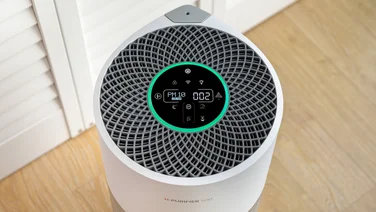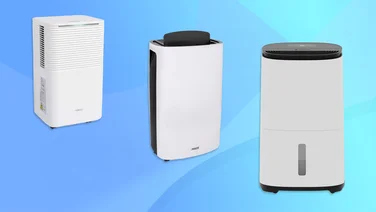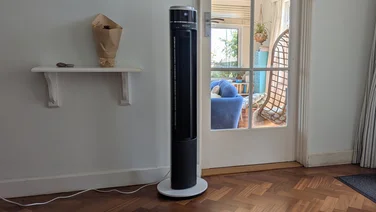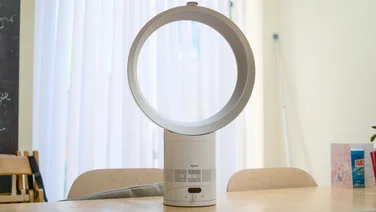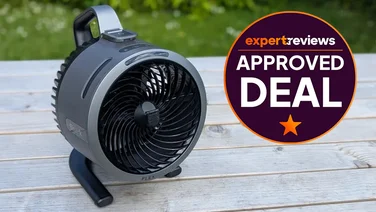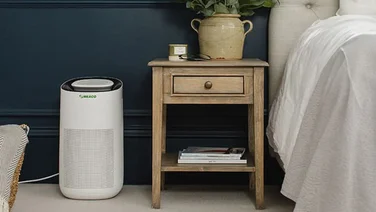To help us provide you with free impartial advice, we may earn a commission if you buy through links on our site. Learn more

With asthma and airborne allergies like hay fever on the rise, the best air purifiers provide an easy way to clear the air in your home and keep the runny nose and itchy eyes at bay. But while all air purifiers work in much the same way, they aren’t all equally effective. In fact, they can vary dramatically in performance, noise and energy efficiency.
In some cases, the differences come down to size and individual design. Some air purifiers are built to handle small spaces, while others are made to tackle larger rooms or even a whole floor or flat at once. All the same, some models are just better or worse than their rivals, and to find out which air purifiers to recommend and which to leave on the sidelines, we run them through a series of tough tests.
How we test air purifiers: Setup and basic usability
We begin testing each air purifier by unboxing it, removing any tape or additional packaging, and inserting the filter (or filters) provided. We then turn the air purifier on and run through its modes and features. We’ll look at the controls and judge how fast and intuitive it is to adjust speeds and settings, switch between automatic and manual modes and use the timer, if available. We’ll also consider some more practical issues, like how easy it is to move the air purifier from room to room, and how awkward it might be to replace the filters.

Smart features are still quite unusual on an air purifier. But where they’re available, we’ll install any companion app and connect the air purifier to a Wi-Fi 6 home network. We’ll check through any remote control and scheduling features, or any features for tracking air quality across days, weeks and months.
How we test air purifiers: Performance testing
We test air purifiers in real-world scenarios inside the home, looking at how they deal with kitchen odours and, if we’re testing during winter, fumes from a wood burning stove. For our standard throughput test, we set up the air purifier in a small room alongside an air quality monitor, and either switch it to its automatic mode or turn the speed setting to the maximum. We then spray a particularly evil-smelling Lynx deodorant for five seconds and start a stopwatch, making a note of the peak count of PM2.5 particles in the air. We use the stopwatch to time how long it takes the air purifier to bring PM2.5 particle levels down to a safe 25μg/m3.
When we talk about air pollution, we’re usually talking about particulate matter and VOCs. Particulate Matter (PM) is anything you find in the air that’s not a gas, including a variety of toxic chemical compounds. Following inhalation, they can enter the bloodstream, where they’re transported around the body to reach organs including the lungs, brain and heart. Their accumulation can cause damage, particularly to those with respiratory problems. Some of these pollutants are naturally occurring (e.g. pollen), but others come from industrial processes, aerosols and sprays, burning, tyre and brake wear on vehicles or vehicle emissions.
PMs are usually categorised in terms of the size of the particles. PM2.5 means particles of less than 2.5 micrometres in diameter, while PM10 particles are less than 10 micrometres. PM10s can be inhaled, causing coughing and irritation, but PM2.5s are much more dangerous: they’re small enough to enter the deepest parts of the lungs and the bloodstream, and also more likely to cause long-term respiratory damage.
Volatile Organic Compounds (VOCs) are man-made chemicals with a high vapour pressure and low water solubility, often used in construction and decorating products or household detergents, or emitted by devices like photocopiers or laser printers. Where they build up they can irritate the skin, eyes and respiratory system or cause headaches and nausea. Worse are long-term concerns, including neurological damage and various forms of cancer.
Most air purifiers are designed to remove PM10 and PM2.5 particles, but not all trap VOCs. This isn’t a huge concern in households with low VOC emissions, but in newly built or decorated homes, or homes close to sources of pollution, it’s worth looking for an air purifier with these filters.
How we test air purifiers: Noise and power consumption
Some of us use air purifiers while sleeping or relaxing after work, making noise levels really important. Following the performance testing, we’ll use a smartphone sound meter to measure the decibel output of the air purifier on its lowest, medium and highest speeds, along with the output in any sleep or night mode. We also measure power consumption at the highest and lowest settings, to make sure each air purifier won’t cost a fortune to run.
How we test air purifiers: Refining our tests
Keeping our testing methodology consistent makes it possible for us to compare air purifiers over several years, which is a necessity in a market where products might stay on sale for three to five years or more. All the same, we’ll discuss how we can improve our testing over time, both to make sure we’re taking account of any new capabilities, and to respond to feedback from our readers and air purifier manufacturers.

